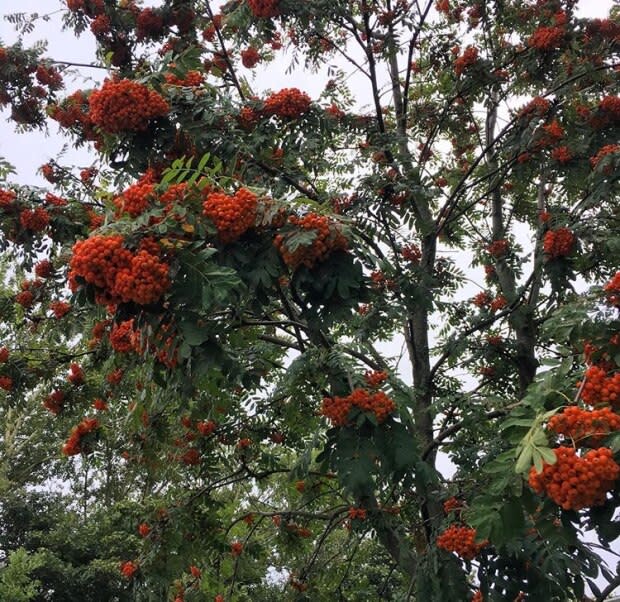With berries abound, expect to see more birds on P.E.I. this winter
Wildlife experts say it's been a bumper crop for fruit-bearing winter plants this year — and with more berries comes more birds.
Gary Schneider, the project manager with Macphail Woods Ecological Forestry Project, said he's noticed a lot of fruit on plants such as the American mountain ash, winterberry holly and hawthorn.
"Often when the snow falls we get, you know, green spruce trees and white snow and not a whole bunch else. So it's really nice to have some colour in the landscape," he said.
He said he doesn't know why there's an increase this year, but said it could be due to last year's winter temperatures or a good pollination season.
Schneider said he's already seen some critters benefiting from the larger crop.
"I know that raccoons have been eating the mountain ash berries like crazy because [you] see piles of their scat all over the place and the birds will be really feasting on them."
'The starches turn into alcohol'
Dwaine Oakley, the learning manager for the wildlife conservation technology program at Holland College, said quite a few species of birds switch their diets from insects to berries at this time of year.
"Some of those, like, from further south might be showing up in our area, like a northern mockingbird for instance," he said.
"There's possibility of thrushes that will come over from Europe as well."
Oakley said the large berry crop is attractive to bird species that migrate to the Island in the winter and to those that are still lingering, like American robins, pine grosbeaks and waxwings.
Schneider said while the berries provide a great source of food for birds and other wildlife, if too many fermented berries are consumed they may become drunk.
"Any kind of fruit whether it's apples, or hawthorns, or mountain ash, when it freezes and thaws over the winter it starts to decompose and the starches turn into alcohol, I guess," he said.
"The stories I've heard is that the birds will just sit underneath an apple tree or something and just eat and eat and eat and all of a sudden start looking woozy or literally walking crooked and displaying characteristics as if they've been drunk."
Trails are a great spot for birding
Oakley said the influx of berries is something to look forward to.
He said he's heard from people who use winterberry to make wreaths for the holiday season, and that some birds have helped themselves to the arrangement.
"Sometimes you will have people that will call up and say 'listen I had some winterberry in one of these arrangements, have these beautiful birds show up and eat all the berries, what were they?'"
"Nine times out of ten, it's one of the waxwing species," he said.

Schneider said humans can also help themselves to the fruit, but need to be cautious.
"The American mountain ash and the hawthorn … I think are all edible," he said. "The winterberry holly is actually poisonous. So you do have to be careful about what you put in your mouth."
Oakley and Schneider said the plants can be spotted all across the Island.
"The Confederation Trail is always a great spot, especially in the Charlottetown area because there's a lot of European mountain ash that has been planted along the trail," said Oakley.
More P.E.I. news

